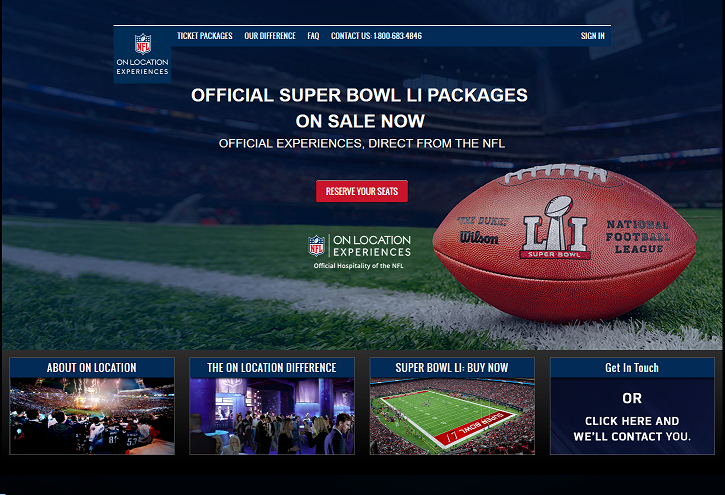
Optimized landing pages are an essential element of online marketing and ecommerce. This is especially true now that mobile search – with it's limited screen space – has become the go-to option for many consumers. Additionally, creating an optimized landing page for your Pay-Per-Click (PPC) campaigns will make the most of your budget, streamline the purchasing process, and drive more conversions for your online store. With that in mind, check out these best practices on how to improve your PPC landing pages. For a more general guide on improving your overall paid campaigns, check out our list of the 9 most important PPC metrics for ecommerce.
Funnel consumers to targeted pages
Every once in a while, we'll see an ad on Google that takes users right to a site's home page. While this might sound like a good idea for branding, people that search sites like Google are often looking for pretty specific information, so it makes sense to bring those potential customers to a targeted page related to their search query, rather than to your home page. A home page often exhibits multiple goal-oriented messages, which makes it more appropriate for a curious explorer. But if your main goal is to increase conversions, it helps to focus on one message, one goal, and one page. Which takes us to our next tip!
Determine a clearly defined goal for your landing page
Because the traffic you're generating with a PPC campaign isn't free, it's extremely beneficial to make a plan for what you're trying to accomplish. Each landing page you add to your campaign should have a clear, well-defined and measurable goal. The obvious goal is to optimize for conversions, but you may also choose to lead people to more information on your product or service, or to enroll people in a weekly newsletter. Whatever the goal, it is imperative that all landing pages have a clear and targeted message. Once your page has a main idea or focus, make sure to also have an equally clear and effective call to action, so site visitors know where to go (more on that later).
Create an eye-catching primary headline
Don't neglect category headings and titles! You want to make sure to explain to your visitors what the landing page is about, and ensure that it is relevant to their search term.
Develop a strong call to action (CTA) that supports your goal
A strong CTA successfully delivers a clear message that encourages the visitor to engage with your site, and ultimately convert. Buttons with the text “Buy Now”, “Add To Cart”, or “Register Now” should be placed strategically on the page. Of course, you can feel free to get creative with your CTA button text, but it should remain concise and to-the-point.
Pay attention to design and user experience
First impressions are always important, so be sure to design your landing pages in a way that is visually appealing and easy to navigate, understand, and read! Do not include information that is not relevant to your page’s goal. Try to put yourself in the shoes of someone who has not visited your site before (in fact, bring over a friend who is unfamiliar with your site!). If a first-time visitor doesn't like the look or feel of your site, navigation, or category pages, it's a good idea to consider changing the design to be more user-friendly.
Make sure all CTA buttons or forms are mobile-friendly
If someone clicks your ad on a mobile device and wants to convert, you must be sure the form or conversion button works flawlessly. A difficult user experience for a potential customer will likely kill a conversion opportunity. Run tests on a variety of mobile devices and internet browsers. If something isn't working or looking right, work to fix it as quickly as possible. You can also test your site for mobile usability using Google's aptly-named resource.
Test the speed of your landing page, and make sure it loads fast!
Page load speed is becoming more and more important, as many users are getting used to faster internet speeds. There are a number of tools that can test, assess and help diagnose your page speed and display key areas of improvement. You can use whichever tool you prefer, but GTmetrix and Pingdom are good ones.
Be consistent
Always make sure that your ad copy appropriately matches the landing page’s message. Differing messages lead to confusion, which increases the chance of a potential customer bouncing from your page. Go through every step of your conversion process, and make sure that your message is consistent and always on point.
Use relevant images that support your product or service
Large, high resolution photos have shown to lead to higher online conversion rates, and studies have shown that images are better at grabbing a viewer's attention. If you have the time or budget to devote to having some custom image design, adding some eye-catching, attractive images to your landing pages can go a long way.
Don’t go overboard with landing page copy
It is important not to overwhelm site visitors with an abundance of site text, if you can avoid it. The goal should always be to deliver a clear value proposition and CTA to consumers who click on your PPC ads, so it is important to keep the reading to a minimum. The purpose of a landing page should not be overshadowed by information that could distract visitors from converting. Depending on the product or service, a short list of bullet points about your product or service is much more effective than long paragraphs.
To give a good example of what we're looking for, we performed a search query for "super bowl tickets" and found the following ad:

Clicking on the ad brings us to the following landing page. Notice the use of high resolution graphics, the clear and informative headline, and the multiple CTA buttons (“Reserve Your Seats”, “Super Bowl LI: Buy Now”, and “Get In Touch”). The goal is to drive purchases on premium ticket packages (which is clearly and concisely communicated), and highly targeted to consumers who are actively looking for a high-end Super Bowl ticket package. As you can see, the landing page and PPC ad message remains consistent.

An optimized, well-designed landing page is a must-have to meet your Paid Search goals. Make a positive first impression on potential customers, drive conversions, and get the most out of your paid search budget by sticking to these best practices!











